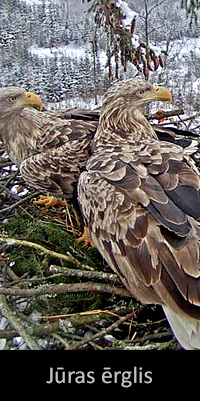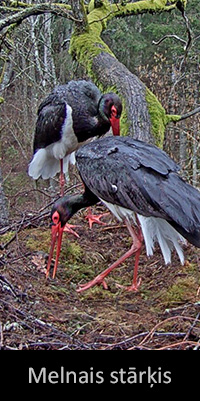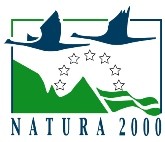|
|
Recent reports
Black Redstart
Phoenicurus ochruros - 2025-10-15 Ekoskola Taurenitis
Great Tit
Parus major - 2025-10-15 Ekoskola Taurenitis
Barnacle Goose
Branta leucopsis - 2025-10-15 tatia
Goldcrest
Regulus regulus - 2025-10-15 DainisKR
Wren
Troglodytes troglodytes - 2025-09-29 DainisKR
White Wagtail
Motacilla alba - 2025-10-01 DainisKR
Common Kingfisher
Alcedo atthis - 2025-10-01 DainisKR
|
Recent comments on observations
Ivars Leimanis Vēlams izcelt - kā interesantu novērojumu! toms.b Mareks Kilups Mari pag, uz milimetru papīra tas melnais ir kolumella? Nevis balta, bet melna? zemesbite Mari Bekuvecis 15.oktobris, 18:21 Bezkaunīgs jautājums: pēc kā noteikts, ka tieši Peka brūnzobe, nevis rūsganā? Bekuvecis 15.oktobris, 18:21 Bezkaunīgs jautājums: pēc kā noteikts, ka tieši Peka brūnzobe, nevis rūsganā? Mari laumae Mari Ziemelmeita Astra, vai ir iespējams atcerēties, uz kādas kritalas kādā biotopā tas bija? adata adata LMM 14.oktobris, 21:38 M.rosea vai M.pura. Vizuāli līdzīgas sugas Ziemelmeita Paldies,Julita! Gan jau pienāks brīdis, kad šito arī izdosies noteikt. Ziemelmeita Paldies,Julita! Prieks,ka izdevās noteikt. Tik skaisti dzeltenu vairāk nav nācies satikt. Visticamāk lietus sašķaidījis ragansviestu tā, ka pat pazīt grūti. Vīksna VijaS ekologs Dižais mājas zirneklis (Eratigena atrica, syn. Tegenaria atrica). Mari ekologs Hm, kāda pundurvabole (Scydmaenidae sp.)? Hmm. Pēc skata T.varia, bet elateru vijumi izskatās vairāk nekā divi?! Te būtu vēl jāpadomā Mari Mežirbe777 Mari Mežirbe777 Tik iespaidīga atradne nav redzēta. Varētu būt ekvivalenta vairāk kā desmit dižkokiem :D Skaisti! Vai ir zināms,vai šī ir jauna, vai jau zināma atradne? adata Krauķiem arī ir spīdīgas spalvas. Pie tam tā apkārtne ir tipiska krauķu uzturēšanās vieta. ekologs Lielā skrejvabole (Carabus coriaceus). mežataksators Nē,, apspalvojums ar metālisku zaļganu un violetu spīdumu. mazais_ezis Vai nav krauķis jaunais putns? Vīksna Vīksna Samērā vēls novērojums rudenī. Vai ir pārliecība par sugu? adata Tā droši ir pumpurīte, nevis cukurīte? Kāds ir kapilīcijs? pustumsa Izskatās pēc dzeltenā ragansviesta, bet sporas gan milzīgas! zemesbite zemesbite Lemmus Liels paldies par noteiktajām sugām! :) Bekuvecis 10.oktobris, 18:57 Vīksna Grandāns 10.oktobris, 18:14 Ja būs nepiecišams pievienošu audio ar failiem lv. graudzins 10.oktobris, 13:39 graudzins 10.oktobris, 13:37 graudzins 10.oktobris, 13:34 Raksti uz spārniem un noteicošā baltā svītra uz stilba, liecina, ka šis ods ir Culiseta annulata graudzins 10.oktobris, 13:28 LMM 10.oktobris, 00:32 Mari Varbūt Tīklotā lākturīte (Cribraria cancellata)? Karmena VijaS adata 3.att. labajā pusē vai nav gludais ragansviests? adata adata Varbūt sēne, violetā ragansviestene? VitaP. adata Ivars Leimanis Ziemelmeita Paldies,Ivar! Inita domā,ka drīzāk P.podospilens vai P.plautus, bet ne ēnainā jumtene. Tomēr I.elegans C tipa mātīte. Ivars Leimanis Pavisam noteikti - ēnainā jumtene! ludmila2024 09.oktobris, 10:16 Amanda Mari Ā, tad labi, tie ir tie mezgli :)) Mari Granulas gan nemanīju, bet kaut kādi dzelteni veidojumi bija - mezgli, ne mezgli.... 7. foto. Ivars Leimanis Bekuvecis 08.oktobris, 10:35 Nav lapiņsēne, lai gan par tādu izliekas! adata Iekšās neko dzeltenoranžu neizdevās ieraudzīt? Vismaz kādas dzeltenoranžas granulas.. adata Nu brošiņa! Labāku vietu neatrast! adata zane_ernstreite Paldies, Iveta! Šis bija no sērijas - zināju, bet aizmirsu... adata Mari Ceturtais foto dienu vēlāk - 7. okt. Mežirbe777 Ivars Leimanis Ivars Leimanis Edgars Smislovs Amanda mazais_ezis Šī būs lielā čakste, brūnā čakste pašlaik sauļojas Tanzānijā. Mari Kritala visticamāk bija egles. Mari Jā, jums taisnība - būs Violetā šūnaine! :) Ziemelmeita Jebkurā gadījumā es to paraudziņu gribētu redzēt ;)) Siona Bet nu uz ceriņa - tas ir vnk super!! Paldies pasaki skolēniem :)) Siona Ivars Leimanis Ticamāk, ka Ceriporiopsis aneirina. Noteikti ne kāriju aporpija. VijaS Es arī lieku uz violeto šūnaini. Kritala varētu būt egle? Pūcis Iespējams aizšauts medību laikā. Garkaklis. Mari Kāda no aveņgļotsēnēm? 3. foto no mājas paraudziņa. Oho, cik interesanti!! Bet bez rūpīgas mikroskopēšanas pat līdz ģintij tikt nevarēs. Vīksna sandis sandis Ziemelmeita ekologs Manuprāts, praulvabole (Prionychus sp.), velk pat uz melno praulvaboli (Prionychus ater). Marina, jā, es zinu, vēl nesanāca laika paskatīties. ekologs ekologs Lapgrauzis (Galeruca tanaceti). adata mufunja Julita, es tev nosūtīju šo paraugu. Varbūt tu vari saprast, kas tas ir. Ziemelmeita Paldies, Ansi, par sūnu noteikšanu! Mežirbe777 Paldies, Ansi! Ja vairāk redzošu acu pievērstu uzmanību, nešaubāmi nāktu klāt vēl atradņu :) Vladimirs S Pūcis eurycercus 05.oktobris, 09:24 adata pustumsa pustumsa Amanda Mari Spurainais diemžēl ir pelējums, un baltais - gļotu stadija, kas tālāk neattīstījās. Lemmus Mari Ieliku foto, kur labi redzama melnā kājiņa ( tas augļķermenītis gan aizgāja bojā) Mari a.b Edgars Smislovs Melnas kājiņas? Pavisam interesanti! Nu lai vēl pagatavojas. Kāds aptuveni diametrs? Mari Mari Julita, kas tas varētu būt? Melnā stadija jau turpinās vairākas dienas bez izmaiņām. Edgars Smislovs Gredzenots kā mazulis 2023.05.22 Rīgā, Mežaparkā, tēviņš, gredzenoja I.Jakovļevs. Eggy Mari Fantastiski! Par birstošām kārpām gan kaut kas jauns, nedzirdēts :) Mari mufunja Paldies! Paraugs ir saņemts :). Kad sanāks laiks, mikroskopēšu. Kas tieši mulsina? Sporu izmērs atbilst, raksts arī, gredzens ir. Kas tīkliņam vainas? mufunja Julita,man ļoti žēl, bet nav parauga. Mari Varbūt Vāles pilienīte (H.clavata)? Mulsina tikai sporu tīkliņš... Vīksna IlgvarsG 02.oktobris, 08:49 Vai tāda zoss uzvedība ir normāla? Mari ekologs ekologs ekologs ekologs Parastā klajumspāre (Sympetrum vulgatum)? Ziemelmeita |



















